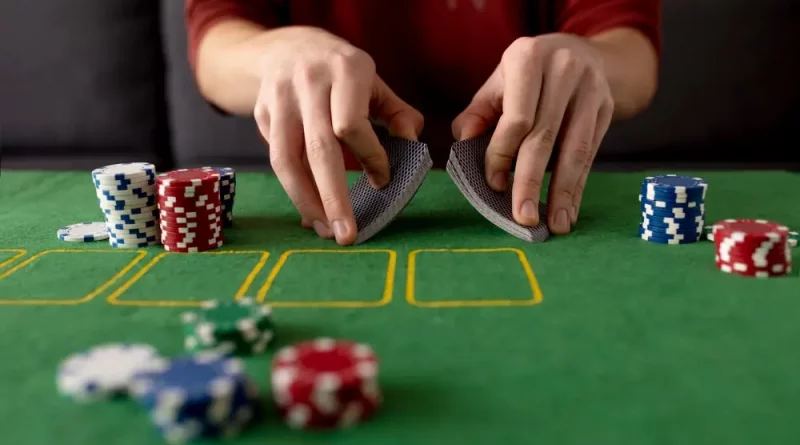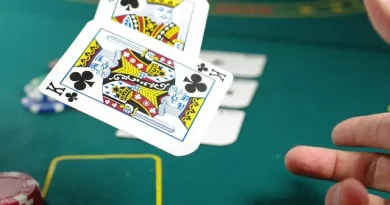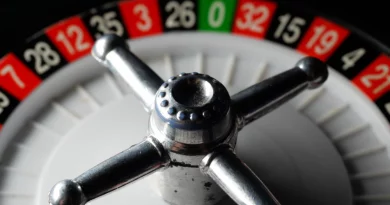What is omaha poker?
Omaha Poker is a beloved and popular version of poker. This game presents interesting strategic opportunities and decisions by giving players four private cards instead of two. Omaha Poker provides an exciting twist on the classic card game, making it enjoyable for players of all skill levels.
Basics of Omaha Poker
Omaha Poker is a unique card-based game played with a set of four-hole cards and five community cards. The objective of the game is to win the pot by having the best poker hand or by coercing your opponents to fold their hands. Every player can form a five-card hand by selecting two hole cards and three from the community board. Additionally, there are several betting rounds such as pre-flop, flop, turn, and river. This extra level of interaction allows players to think strategically about their betting strategy with each move they make.
Pot Limit Omaha
In Pot Limit Omaha, the minimum bet is equal to the size of the big blind. However, players have the option to bet up to the size of the pot. When it comes to raising, there are certain rules that must be followed.
The raise amount must be at least as much as the previous bet or raise in that same round. For instance, if the first player bets $5, then the second player must raise a minimum of $5, making it a total bet of $10. On the other hand, there is also a maximum limit on how much a player can raise.
This limit is determined by the size of the pot, which includes all active bets on the table and the amount that the active player needs to call before raising. It is important to note that in Pot Limit Omaha games, there is no limit on how many raises are allowed during gameplay.
No Limit Omaha
In No Limit Omaha, the minimum bet is equal to the size of the big blind. However, players have the freedom to bet any amount they desire, including all of their chips. When it comes to raising in No Limit Omaha, the raise must be at least as much as the previous bet or raise made in that round. For example, if the first player bets $5, then the second player must raise a minimum of $5, making it a total bet of $10. The maximum raise is determined by the size of your stack, which refers to the number of chips you have on the table. Unlike other poker variations, there is no limit on how many times you can raise in No Limit Omaha. Feel free to keep raising and betting throughout the game!
Fixed Limit Omaha
Fixed Limit Omaha betting follows a strict structure with predetermined amounts. During the pre-flop and flop stages, all bets and raises match the big blind size. However, on the turn and river, the bets and raises double in size. In Limit Omaha, each player is allowed up to four bets per betting round, which includes a single bet, a raise, a re-raise, and a final raise known as the cap.
Basic Strategies of Omaha Poker
In Pot Limit and No Limit Omaha games, the games are named based on the blinds they have. For instance, a $1/$2 Omaha game signifies that it has a small blind of $1 and a big blind of $2. Betting begins with the player to the left of the big blind.
On the other hand, in Fixed Limit Omaha games, the big blind is equal to the small bet, and typically, the small blind is half the size of the big blind. However, depending on the stakes involved, it may be larger. As an example, in a $2/$4 Limit game, the small blind would be $1 and the big blind would be $2. In a higher stake like a $15/$30 Limit game, expect to see a small blind of $10 and a big blind of $15.
After this stage, each player receives their four-hole cards. Betting then proceeds clockwise around the table starting with “the player under the gun,” which refers to whoever sits immediately clockwise from the big blind.
Pre-Flop betting round
Once each player has assessed their hole cards, they are presented with the opportunity to participate in the hand by either calling or raising the size of the big blind. The action commences adjacent to the big blind, which serves as an active wager during this round. The player in question has three choices before them: fold, call, or raise. To illustrate further, if the big blind were valued at $2, it would necessitate a $2 bet to call or a minimum of $4 to raise. Subsequently, action proceeds in a clockwise fashion around the table.
The Flop
Once the initial round of betting has concluded, the “flop” is revealed to all players. The flop consists of three community cards that are accessible to every active player. The next stage commences with the active player directly clockwise from the button position. Following this, another round of betting takes place. In Fixed Limit Omaha, all bets and raises must be made in increments determined by the small bet.
The Turn
Once the betting action for the flop round is concluded, the ‘turn’ card is revealed on the board. In Omaha poker, this signifies the arrival of the fourth community card. The turn initiates with the active player positioned immediately clockwise from the button. Subsequently, another round of betting follows. It’s important to note that in Fixed Limit Omaha, bets and raises during the turn must be made in increments equivalent to that of the big bet.
The River card
After the completion of all the betting activity during the turn round, the ‘river’ card is unveiled, facing upwards on the game board. In Omaha poker, the river represents the fifth and final community card to be distributed. This marks the commencement of the last stage of betting, which begins with the active player situated directly clockwise from the button.
The Showdown
In the event that there are multiple players remaining after the final betting round, the individual who placed the last bet or raised will disclose their cards. However, if no bets were made during the final round, the player immediately clockwise from the button will be the first to reveal their cards. The winner of the pot is determined by whoever possesses the strongest five-card hand. It is crucial to understand that in Omaha, players are required to utilize precisely two of their four-hole cards in conjunction with three community cards to form their hand. In instances where identical hands arise, the pot will be evenly divided amongst those players holding the superior hands.
Differences between Omaha and other types of poker
Omaha Poker has some distinct differences from Texas Hold’em such as the number of hole cards, hand construction rules typical strength of hands, and betting structures. In Omaha, each player is dealt four hole cards that they must use two of to construct their hand. This allows for more combination possibilities compared to Texas Hold’em. Additionally, due to the nature of four-hole card hands, hand strengths tend to be higher on average making it easier to form strong holdings. Lastly, Omaha is usually played with a pot-limit or fixed-limit betting structure while Texas Hold’em frequently utilizes no-limit or pot-limit formats. These distinctions make Omaha an exhilarating variant that requires players to adjust their strategies accordingly to succeed in the game.
Hand formation and showdown in Omaha Poker
- The “Two from Hand, Three from Board” rule is essential to Omaha Poker. This means that a player must comprise two hole cards and three board cards to qualify as a legal hand. All participants of the game need to be familiar with and adhere to this rule to determine the strength of each hand only based on factual criteria.
- Omaha Poker, like all poker games, relies heavily on hand rankings to determine winners. From most valuable to least, the hand rankings are Royal Flush, Straight Flush, Four of a Kind, Full House, Flush, Straight, Three of a Kind, Two Pair, One Pair, and High Card. The highest-ranked hand possible typically takes the pot.
- The showdown occurs when two or more players remain after the completion of all betting rounds. Each participant in the showdown reveals their hole cards, and the winner is determined according to the ‘two from hand, three from the board’ rule. The player with the highest-ranking hand takes possession of the pot.
- In Omaha Poker, players can have a split pot if they have the same ranked hand. In these cases, the pot is usually divided equally among them. It’s worth noting that in Omaha Hi-Lo Poker, there must be a qualifying low hand with five different cards, all ranked 8 or lower, to split the pot.
What is Omaha Hi-Lo?
Omaha Hi-Lo is a variant of the popular poker game Omaha that includes an exciting twist: the division of the pot between the best high hand and the best low hand. This adds an extra element to the game, making it more complex and challenging. For Omaha Hi-Lo’s pot splitting to happen, certain conditions must be met. It adds a new level of complexity and excitement for those who are looking for a unique poker experience.
Playing Omaha Hi-Lo involves using four private cards, where two of these must be paired with three of the five community cards to form the best hand – either a high or low hand. The low hand consists of five unpaired cards with a value of 8 or below. This adds an extra layer of complexity and strategy to the game, opening up the possibility for players to win with both a high and low hand.
Rankings and strategies for Omaha Hi-Lo Poker games
- In Omaha Hi-Lo, the pot is split between the best high hand and the best low hand. To qualify for the low hand, it must have five different ranked cards of 8 or lower (the “wheel” or “nut low” being A-2-3-4-5). The same player can win both halves of the pot if their hand qualifies. Players should be mindful of this when strategizing regarding Omaha Hi-Lo.
- Players need to consider both the high and low possibilities when making decisions. Players need to determine the strength of their hands about both the high and low stakes. Pursuing the “scoop” – winning both halves of the pot – is a common strategy used by many players. Therefore, you must use an effective strategy when playing this game.
- The pot can be split between players if there is a qualifying low hand. A player with both the best low and high hands will take home the entire pot, referred to as “scooping” it. When multiple players have competing low and high hands, the pot will be divided correspondingly.
- Board texture is an important consideration. Different card combinations on the board can make high and low hands more or less likely. Players should be mindful of these possibilities when assessing their strategies, ensuring they account for both sides of the pot. Evaluating board texture is an indispensable part of Omaha Hi-Lo gameplay.
- Omaha Hi-Lo Poker is a strategic game that offers its players more winning opportunities than regular poker. To succeed in this form of poker, it’s essential to have an understanding of hand rankings and strategies, as well as the ability to accurately assess the board texture. Knowing these elements will help you become successful in Omaha Hi-Lo Poker.
Seeking an answer to is counting cards illegal? Dive into our detailed guide to find relevant information.
Basic tips when you play Omaha Poker
In Omaha Poker, correct hand selection is key. Look for hands with connected cards and suited cards that have the potential to form both high and low hands. When dealing with the flop, think of potential straight draws, flush draws, or how the flop relates to your pocket cards. Position at the table also matters; when in a late position, you have more information about how other players are acting during the hand which can help you make better decisions. Poker slang is something you can’t even try without as other players and dealers can easily use it against you. Last, but not least, try to aim for nut hands as they offer a greater chance of winning against multiple opponents.
FAQ
Omaha Poker is a version of poker that gives each player four private cards and five community cards to form the best possible five-card hand. The hand has to include exactly two from their private cards and three from the community cards.
The main difference is the number of private cards dealt to each player – four in Omaha Poker and two in Texas Hold’em. Additionally, in Omaha Poker, a player must use exactly two private cards and three community cards to form their hand, whereas in Texas Hold’em, a player can use any combination of private and community cards.
In Pot Limit Omaha, players can bet any amount up to the total current size of the pot. Also, the minimum bet allowed is the size of the big blind.
In No Limit Omaha, players can bet all of their chips in one round. There are no limits to bet sizes, except that a bet can’t be smaller than the size of the big blind.
In Fixed Limit Omaha, there are preset betting limits for each round, and players can only raise their bets up to four times in one betting round.
Omaha Hi-Lo, also known as Omaha 8 or better, is a variation of Omaha Poker where the pot is split between the highest and lowest-ranked poker hands at the showdown. To qualify for a low hand, a player’s hand must contain five cards, all being 8 or lower.
While luck plays a role in any poker game, understanding the rules, hand rankings, knowing when to fold, and reading the “board” (community cards) can improve your chances. Developing a strategy around the hand you’re dealt and adapting it based on your opponents’ actions is also essential.
While it’s theoretically possible to count cards in any poker game, this strategy isn’t typically effective in Omaha Poker due to the number of cards in play and the frequency at which the deck is reshuffled.
The showdown occurs after the final betting round, where the remaining players reveal their hands. The player with the highest-ranking poker hand wins. In Omaha Hi-Lo, the pot is shared between the highest and lowest qualifying hands.




